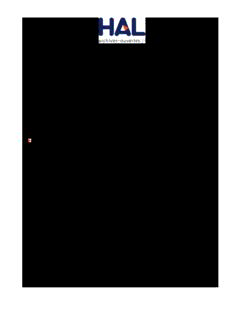Table Of ContentRethinking the Wild Coast, South Africa. Eco-frontiers
vs livelihoods in Pondoland
Sylvain Guyot, Julien Dellier
To cite this version:
Sylvain Guyot, Julien Dellier. Rethinking the Wild Coast, South Africa. Eco-frontiers vs livelihoods
in Pondoland. VDM VERLAG, pp.236, 2009. hal-00420064
HAL Id: hal-00420064
https://hal.science/hal-00420064
Submitted on 29 Sep 2009
HAL is a multi-disciplinary open access L’archive ouverte pluridisciplinaire HAL, est
archive for the deposit and dissemination of sci- destinée au dépôt et à la diffusion de documents
entific research documents, whether they are pub- scientifiques de niveau recherche, publiés ou non,
lished or not. The documents may come from émanant des établissements d’enseignement et de
teaching and research institutions in France or recherche français ou étrangers, des laboratoires
abroad, or from public or private research centers. publics ou privés.
Rethinking the Wild Coast,
South Africa
Eco-frontiers vs livelihoods in Pondoland
Sylvain Guyot
Julien Dellier (Eds.)
5
(cid:2)
(cid:2)
(cid:2)
(cid:2)
(cid:2)
(cid:2)
(cid:2)
(cid:2)
This(cid:2)book(cid:2)is(cid:2)dedicated(cid:2)to(cid:2)Chloé(cid:2)and(cid:2)Héloïse(cid:2)
7
Contents(cid:2)
(cid:2)
Contents...............................................................................................................7(cid:2)
Foreword............................................................................................................11(cid:2)
Acknowledgements ............................................................................................15(cid:2)
Authors...............................................................................................................17(cid:2)
Chapter(cid:2)1:(cid:2)General(cid:2)Introduction .........................................................................23
1.(cid:2)Background(cid:2)to(cid:2)the(cid:2)book....................................................................................23
2.(cid:2)A(cid:2)book(cid:2)to(cid:2)clarify(cid:2)current(cid:2)territorial(cid:2)dynamics(cid:2)in(cid:2)Pondoland.............................27
3.(cid:2)Presentation(cid:2)of(cid:2)the(cid:2)different(cid:2)chapters.............................................................29(cid:2)
Chapter(cid:2)2:(cid:2)The(cid:2)Wild(cid:2)Coast:(cid:2)the(cid:2)Contested(cid:2)Territory............................................33
1.(cid:2)Introduction(cid:2)to(cid:2)Eco(cid:3)frontiers(cid:2)and(cid:2)spatial(cid:2)process.............................................33
2.(cid:2)Introduction(cid:2)to(cid:2)the(cid:2)Wild(cid:2)Coast(cid:2)of(cid:2)the(cid:2)Eastern(cid:2)Cape,(cid:2)South(cid:2)Africa....................35
3.(cid:2)TRALSO’s(cid:2)involvement(cid:2)in(cid:2)the(cid:2)Wild(cid:2)Coast..........................................................37
4.(cid:2)The(cid:2)nature(cid:2)of(cid:2)conflicts(cid:2)in(cid:2)the(cid:2)Wild(cid:2)Coast:(cid:2)What(cid:2)are(cid:2)the(cid:2)issues? ......................39
5.(cid:2)Control(cid:2)and(cid:2)Management(cid:2)of(cid:2)Resources ...........................................................43
6.(cid:2)Conclusion.........................................................................................................53
References............................................................................................................56(cid:2)
Chapter(cid:2)3:(cid:2)The(cid:2)Fight(cid:2)for(cid:2)Land(cid:2)Rights(cid:2)Versus(cid:2)Outsider’s(cid:2)‘Appetites’:(cid:2)Wild(cid:2)Coast(cid:2)Eco(cid:3)
Frontier(cid:2)Dynamics...............................................................................................59
1.(cid:2)Introduction......................................................................................................59
2.(cid:2)National(cid:2)policies(cid:2)of(cid:2)land(cid:2)conflicts(cid:2)resolution....................................................63
3.(cid:2)The(cid:2)Wild(cid:2)Coast,(cid:2)a(cid:2)dynamic(cid:2)eco(cid:3)frontier(cid:2)marked(cid:2)by(cid:2)competition(cid:2)and(cid:2)conflicts 65
4.(cid:2)Four(cid:2)“variations”(cid:2)on(cid:2)eco(cid:3)frontiers(cid:2)and(cid:2)land(cid:2)conflicts.......................................71
5.Perspectives.......................................................................................................95
References............................................................................................................97(cid:2)
8(cid:2)
Chapter(cid:2)4:(cid:2)Ambiguous(cid:2)Spaces:(cid:2)Natural(cid:2)Resource(cid:2)Management(cid:2)Buffer(cid:2)Zones(cid:2)and(cid:2)
Rural(cid:2)Livelihoods(cid:2)in(cid:2)Pondoland,(cid:2)South(cid:2)Africa....................................................101
1.(cid:2)Introduction....................................................................................................101
2.(cid:2)Pondoland(cid:2)Case...............................................................................................104
3.(cid:2)Conclusion.......................................................................................................113
References..........................................................................................................114(cid:2)
Chapter(cid:2)5:(cid:2)Subsistence(cid:2)Fishing(cid:2)among(cid:2)Indigenous(cid:2)People(cid:2)in(cid:2)the(cid:2)Eastern(cid:2)Cape’s(cid:2)
‘Wild(cid:2)Coast’(cid:2)in(cid:2)South(cid:2)Africa:(cid:2)The(cid:2)Case(cid:2)of(cid:2)Scambeni(cid:2)and(cid:2)Caguba(cid:2)Villages...........117
1.(cid:2)Introduction....................................................................................................117
2.(cid:2)Study(cid:2)Area.......................................................................................................118
3.(cid:2)The(cid:2)International(cid:2)Experience..........................................................................120
4.(cid:2)The(cid:2)South(cid:2)African(cid:2)Experience.........................................................................121
5.(cid:2)Subsistence(cid:2)in(cid:2)Caguba(cid:2)and(cid:2)Scambeni(cid:2)Villages................................................122
6.(cid:2)Conclusion.......................................................................................................126
References..........................................................................................................126(cid:2)
Chapter(cid:2) 6:(cid:2) Questioning(cid:2) Homogenous(cid:2) Degradation(cid:2) Narratives(cid:2) in(cid:2) Transkei:(cid:2)
Livelihoods(cid:2)and(cid:2)Natural(cid:2)Resource(cid:2)Use(cid:2)in(cid:2)two(cid:2)Pondoland(cid:2)Villages.....................129
1.(cid:2)Introduction....................................................................................................129
2.(cid:2)The(cid:2)African(cid:2)degradation(cid:2)narrative..................................................................131
3.(cid:2)The(cid:2)degradation(cid:2)narrative(cid:2)in(cid:2)Transkei............................................................135
4.(cid:2)Study(cid:2)area:(cid:2)description(cid:2)of(cid:2)the(cid:2)villages(cid:2)and(cid:2)livelihood(cid:2)activities.....................138
5.(cid:2)Research(cid:2)methodology...................................................................................140
6.(cid:2)Calculating(cid:2)the(cid:2)relative(cid:2)value(cid:2)of(cid:2)livelihoods ...................................................141
7.(cid:2)Critical(cid:2)Views(cid:2)of(cid:2)Transkeian(cid:2)Narratives...........................................................152
References..........................................................................................................155(cid:2)
Chapter(cid:2) 7:(cid:2) Transhumance(cid:2) and(cid:2) Ticks(cid:2) in(cid:2) Pondoland:(cid:2) a(cid:2) Crisis(cid:2) in(cid:2) Livestock(cid:2)
Management(cid:2)on(cid:2)the(cid:2)“Wild(cid:2)Coast” ....................................................................163
1.(cid:2)Introduction....................................................................................................163
2.(cid:2)Background(cid:2)on(cid:2)Mbotyi,(cid:2)research(cid:2)and(cid:2)livestock(cid:2)in(cid:2)the(cid:2)area............................166
3.(cid:2)Keeping(cid:2)animals(cid:2)healthy(cid:2)(cid:2)(cid:3)(cid:2)transhumance(cid:2)and(cid:2)grazing...................................169
4.(cid:2)Ticks(cid:2)and(cid:2)Dipping............................................................................................176
5.(cid:2)The(cid:2)Impact(cid:2)of(cid:2)Ticks(cid:2)and(cid:2)Perceptions(cid:2)of(cid:2)Tick(cid:3)borne(cid:2)Diseases..........................183
9
6.(cid:2)Some(cid:2)concluding(cid:2)comments...........................................................................187
References..........................................................................................................188(cid:2)
Chapter(cid:2) 8:(cid:2) The(cid:2) Mismatch(cid:2) between(cid:2) Smallholder(cid:2) Realities(cid:2) and(cid:2) Agricultural(cid:2)
Development(cid:2)Interventions:(cid:2)from(cid:2)‘Betterment’(cid:2)to(cid:2)the(cid:2)Massive(cid:2)Food(cid:2)Production(cid:2)
Programme.......................................................................................................191
1.(cid:2)Introduction....................................................................................................191
2.(cid:2)(Neo(cid:3))colonial(cid:2)representations(cid:2)of(cid:2)Africans,(cid:2)land(cid:2)and(cid:2)development...............193
3.(cid:2)Previous(cid:2)agricultural(cid:2)development(cid:2)programmes(cid:2)in(cid:2)the(cid:2)former(cid:2)homelands...195
4.(cid:2)The(cid:2)Massive(cid:2)Food(cid:2)Production(cid:2)Programme,(cid:2)MFPP..........................................198
5.(cid:2)Local(cid:2)livelihoods(cid:2)and(cid:2)the(cid:2)role(cid:2)of(cid:2)agriculture(cid:2)in(cid:2)the(cid:2)former(cid:2)homelands..........200
6.(cid:2)Description(cid:2)of(cid:2)the(cid:2)study(cid:2)area..........................................................................202
7.(cid:2)Data(cid:2)collection(cid:2)and(cid:2)analysis............................................................................203
8.(cid:2)Local(cid:2)livelihoods(cid:2)and(cid:2)agricultural(cid:2)engagement(cid:2)in(cid:2)Xopozo..............................205
9.(cid:2)Xopozo’s(cid:2)engagement(cid:2)in(cid:2)the(cid:2)MFPP ................................................................210
10.(cid:2)Views(cid:2)of(cid:2)smallholder(cid:2)agriculture(cid:2)in(cid:2)the(cid:2)MFPP..............................................214
11.(cid:2)Discussion(cid:2)and(cid:2)conclusions:(cid:2)Stereotypical(cid:2)views(cid:2)of(cid:2)smallholders(cid:2)are(cid:2)still(cid:2)
shaping(cid:2)agricultural(cid:2)development......................................................................217
Recorded(cid:2)interviews...........................................................................................221
References..........................................................................................................221(cid:2)
Places(cid:2)of(cid:2)Reference...........................................................................................229(cid:2)
List(cid:2)of(cid:2)Figures....................................................................................................231(cid:2)
List(cid:2)of(cid:2)Tables.....................................................................................................233
(cid:2)
Description:population : figures shows that population of Pondoland is growing rapidly. Local people . PhD student in Rural Development and Agroecology at the. Swedish decadent Bantustan ruling elite. The principal .. animals, growing marijuana and marine resources such as crayfish, mussels etc. The.

